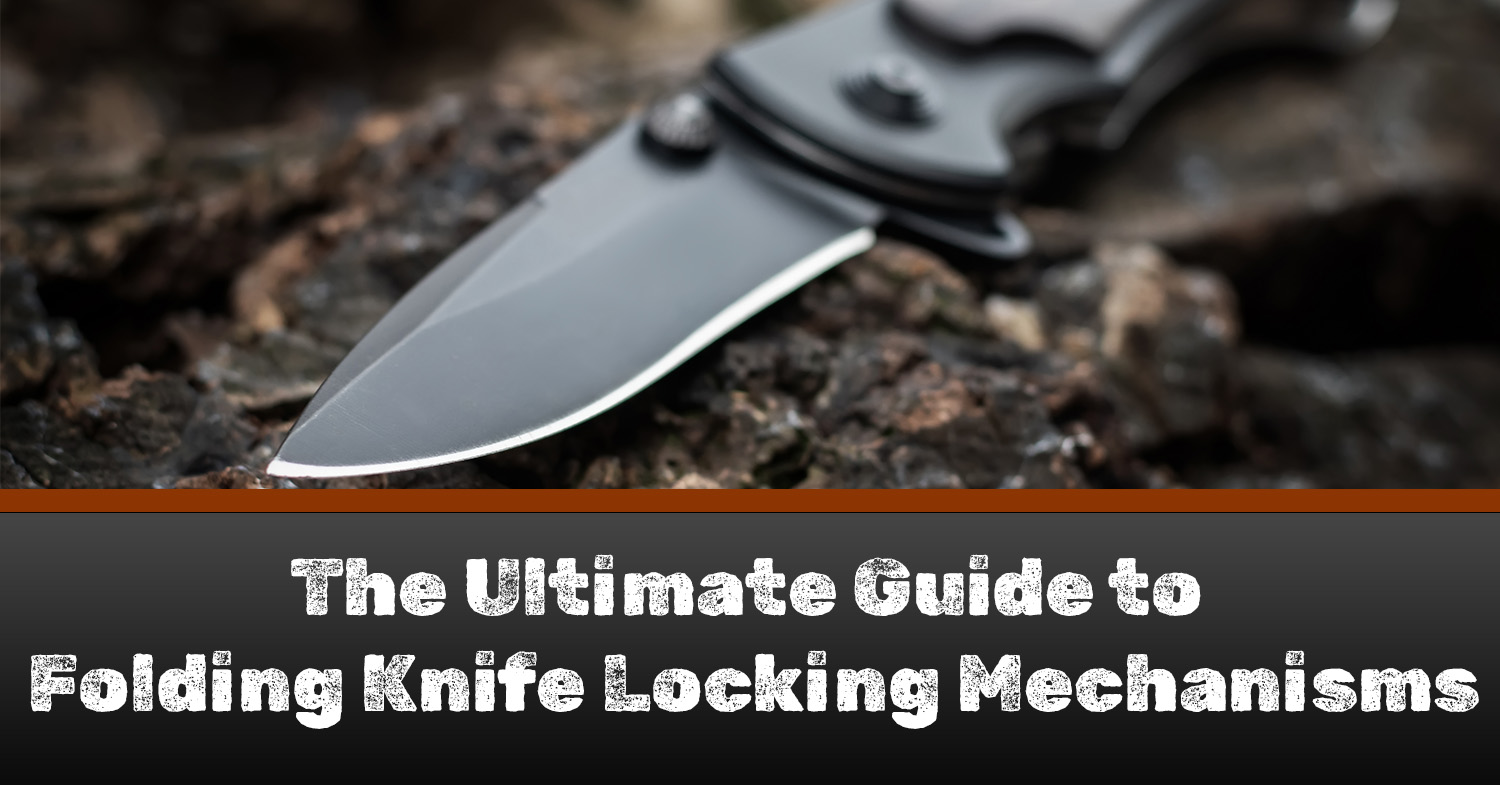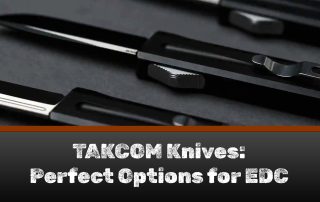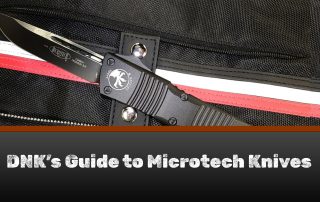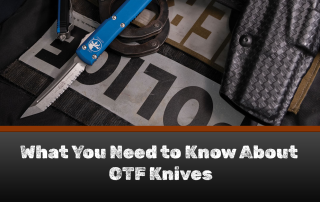
If you’re curious about folding knife locking mechanisms – you’re in the right place. Let’s go over the common locking mechanisms.
What is a Locking Mechanism?
The primary function of folding knife locking mechanisms is to make sure the blade doesn’t close unexpectedly. This prevents accidents and injuries while using the knife. Now, knives didn’t start out with having locking mechanisms. The first pocket knives in history were used as early as Roman antiquity but were held open solely by friction on the inside of the handle halves. Over centuries, mechanisms were developed to lock blades in place, and now there are quite a few different locking types to choose from.
Locking Options
While we won’t cover all the options out there, we’ll cover some of the most common folding knife locking mechanisms. We’ll also cover safety, their ease of use, and some advantages and disadvantages.
Backlocks
The backlock (also known as lockbacks) is one of the most basic and earliest-used pocket knife locks. When opened, a backlock ensures the blade stays in place until you’re ready to close it again by locking it into position. To operate is pretty straightforward – apply pressure on the ‘lock bar,’ typically located along with its spring bar counterpart on the spine of the knife. This action releases its grip from an indent in the base (or tang) of your blade, allowing safe closure.
Because of its symmetrical design, backlock folders are suitable for both right-handed and left-handed users. Another advantage is that your hands stay clear of the blade’s path while closing, which makes it safer. This is a solid and reliable lock design, but it can be difficult to close one-handed.
Linerlocks
Linerlocks hold a prominent position in today’s market due to their simple use. Using it is pretty straightforward. Essentially, it involves a leaf-like spring bar located on the side of the handle interior. When you open your blade fully, the spring bar moves into position against the end of your blade tang. This secures your blade open and prevents any accidental closing when you’re using it. To close, simply move the spring bar away from the tang.
An advantage of this is its ease of use, as it can be used one-handed. But be aware the locking mechanisms can wear down over time, impacting the knife’s ability to securely lock.
Framelocks
Framelocks are a sturdy choice for a reason. They are known for their strength and reliability in securing a blade’s position and are used for many folding knife designs.
The mechanism is based on a locking spring that is part of the handle frame, which is usually made of titanium or aluminum. The locking spring is bolt-cut longitudinally into one of the two halves of the handle. When the blade is unfolded, the latch snaps under the blade root and locks it into place. To retract the blade, the locking spring is pushed to the side. Framelocks are reliable, allow for the use of higher-end materials, and are long-lasting. They also allow for one-handed opening and closing. The downside is framelock knives can be more expensive due to the cost of higher-end materials and the need for precision machining.
AXIS/Crossbar Lock
Axis locks were made famous by Benchmade Knife Co. and are featured in a majority of their knife lineup. This system involves a sliding bar and two omega-shaped springs. When the blade is deployed, the bar will slide back, and the springs will push it back into place when the blade is fully opened, locking it in place. This makes a very firm and reliable lock. By moving the bar back, the lock is released, and you can close the knife. The main drawback is these knives are prone to getting dirt and debris into the lock system, making it stick or not work as well.
Notable Brands and Their Locking Mechanisms
Here are a few notable brands featuring some folding knife lock mechanisms we’ve mentioned.
Three Rivers Manufacturing
Three Rivers Manufacturing (TRM) are quality knives with quality folding knife locking mechanisms. Their Neutron and Atom knives both use linerlocks in their designs. While being safe and sturdy, all TRM knives are 100% manufactured and assembled in the USA using US materials and suppliers.
Spyderco
Spyderco was founded by Sal and Gail Glesser in 1976. Since then, they have made an impressive portfolio of quality folding knives. While they utilize many different folding knife locking mechanisms, one that’s familiar (and we mentioned in this article) is the backlock.
Benchmade
Again, Benchmade changed the game by introducing their Axis lock. While many of their knives utilize this exceptionally secure locking mechanism, some other knife companies have also tried using this unique design for their own knives.
Time to Pick Up Your Next Folding Knife
If you’ve come here looking for the best folding knife locking mechanism, we’re sorry to disappoint. We can’t point to one singular best type because each user has their preferences. In any situation, your best bet is to find the right tool for the job and go with the lock type that best suits the kind of work you will be doing.
Whether it’s your first or fifteenth, we’re ready to help you shop for your next folding knife. Looking for something else? We can help you out with that, too. We have plenty of products to choose from, and you can shop by brand, type, or products made in America. DNK Knives is based in Cave Creek, Arizona, but we ship anywhere in the US.










